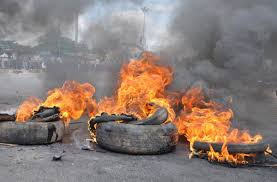Generations of secret Jews defied the Spanish Inquisition to celebrate Passover and other holidays.
Five centuries ago, the Jews of Spain were faced with an unimaginable choice: convert to Christianity or leave the country. When King Ferdinand and Queen Isabella united Spain under Catholic control, they celebrated by decreeing that Spain should be an entirely Christian country.
As of August 11, 1492, no Jew could remain in the country. Any Jew who would be found in Spain after that date would be tortured to death.
Most of Spain’s Jews fled. August 11, 1492 coincided with the somber Jewish holiday Tisha B’Av, when Jews recall the destruction of the ancient Temples in Jerusalem. Added to these national tragedies was the expulsion from Spain. Hundreds of thousands of Jews lined the ports and harbors, embarking on boats headed for North Africa, for Turkey, for Italy and other points unknown. Many of these unfortunate Jews were tricked by unscrupulous captains; some were sold into slavery or even murdered once they left Spanish waters.
Some Jews remained, publicly embracing Christianity but continuing to practice Jewish rituals in secret. Doing so was to court death. Seeking to root out secret Jews, the Catholic Church established the Spanish Inquisition in 1480, tasked with interrogating, torturing and — if they determined that people were practicing Judaism in secret — burning Jews in public mass executions. Despite the promise of death by unimaginable torture, many Jews continued to cling to their Jewish tradition, observing Jewish holidays and eating kosher food as best as they could.
They were known as conversos.
The brutal Inquisition authorities appealed to the public to observe their neighbors and be alert to any sign of Jewish practices. They asked household servants to report any suspicious behavior to church figures. Many of these testimonies have been collected and documented by the husband and wife team Dr. David M. Gitlitz and Dr. Linda Kay Davidson, both former professors at the University of Rhode Island.
In each city in which it was active, the Inquisition published a document called the Edict of Grace, which enumerated the offences that could mark someone as a secret Jew and have them hauled before the Inquisition and tortured. According to one local Edict, Jews were people who:
…(keep) the Sabbaths (by) cooking on...Fridays such food as is required for the Saturdays and on the latter eating the meat thus cooked on Friday as is the manner of the Jews...not eating pork, hare, rabbit, strangled birds...nor eels or other scaleless fish, as laid down in the Jewish law… Or who celebrate the Festival of unleavened bread (Passover), beginning by eating lettuce, celery or other bitter herbs on those days.
Ironically, as years went by and it became harder and harder for Spain’s secret Jews to transmit their heritage to their children, the Edict of Grace acted as a guide to some Jews, outlining what they should do if they wished to hold on to their Jewish heritage. Central to Jewish practice was preparing and eating special foods for Passover and holding secret Passover Seders.
In the annals of the Inquisition are testimonies of servants and neighbors accusing Jews of secretly celebrating Passover. They paint a heartbreaking picture of committed Jews who tried hard to follow the religion of their ancestors, and suffered terribly for their Jewish devotion.
Juan Sanches Exarch was tried by the Inquisition in the city of Teruel in October 1484. Even though Jews had not yet been expelled from Spain, many Jews faced pressure from local officials to convert to Christianity. Juan Sanches Exarch was seemingly one of these Jews who gave into repeated requests and publicly embraced Christianity but continued to maintain a Jewish lifestyle in secret.
Fifty-three articles laid out the charges against him; Passover observance featured prominently. “He celebrates the Passover, on that day eating matzah, celery, and lettuce as the Jews do” the Inquisition put forth. “He gets unleavened bread from the Jewish neighborhood on the Passover. He buys new dishes for the Passover. He does everything else the Jews do on Passover…. He washes his hands before praying (as is the custom at the Passover seder, and at other Jewish meal times).”
Juan Sahches Exarch faced a two year trial and in the end was found guilty; he was condemned to death in 1486.
In 1492, a high level advisor to King Joan II of Aragon, Pedro de la Caballeria, was questioned by the Inquisition and accused of being a secret Jew. According to another secret Jew who was forced to testify against him, Pedro de la Caballeria admitted that he maintained a Jewish lifestyle in secret. “Who hinders me, if I choose, from fasting on Yom Kippur and keeping (Jewish) festivals and all the rest? Now I have complete freedom to do as I like; those old days (of being restricted because he was a Jew) are gone.”
One of the ritual items that was associated with Pedro de la Caballeria was a dish favored by secret Jews: huevos haminados. This dish of eggs boiled with onion skins, olive oil and ashes, resulted in tinted eggs that had a flavor of onions, and were often eaten on Passover.
Another Passover dish embraced by secret Jews was Bunuelos, or dough made from matzah meal that’s fried in oil and then drizzled with honey. Many Sephardi Jews continue to make these Passover sweets today. Historians have uncovered a description from a Spanish woman named Margarita de Rivera who lived in Mexico in 1643, who described making bunuelos in secret. One hundred and fifty years after her ancestors were forced to hide their Jewishness, her family continued to make this classic Passover pastry.
Matzah was perhaps the most damning Passover foods that could bring Jews before the Inquisition. The Inquisition in the town of Almazan recorded several cases of secret Jews making matzah. A woman named Angelina, identified as the wife of Christoual de Leon of Almazan, was accused of making “the dough of flour and eggs, and formed some round, flat cakes with pepper and honey and oil” and baking these curious, flat breads in the Spring.
In 1505, also in Almaan, a Christian woman in the town named Olalla testified to the Inquisition that she sat behind one of her neighbors, a woman named Beatriz, in church, and observed that week after week, Beatriz would take the communion wafer in her mouth, then discreetly spit it out instead of eating it. During her trial, probably after being tortured, Beatriz admitted that she and a friend, identified only as the wife of Ruy Diaz Lainez, “made some cakes separately of another dough that had no leavening and they kneaded it with white wine and honey and clove and pepper, and they made about twenty of those and they kept them...in a storage chest” out of sight of prying eyes.
Some conversos seem to have had the custom of adding finely ground dirt to their matzah dough, perhaps to imply that the Israelites had so little flour in Egypt that they had to add dust, or perhaps to illustrate that matzah (unleavened bread) is also known as bread of affliction. Whatever the reason for this curious addition, it comes up in Inquisition documents from the 1620s in the town of Ciudad Rodrigo, in Salamanca near Spain’s border with Portugal. A secret Jew named Isabel Nunez was accused of “making a Passover bread which they used to mix without leavening or salt, saying certain prayers over it”. Her friend Ana Lopez was accused of eating “Passover bread”. (Ana Lopez was acquitted and set free; tragically, it seems that Isabel Nunez was found guilty of being a secret Jew.)
For generations, Spanish Jewish families maintained their Jewish lifestyles under pain of death and against the greatest odds. Untold numbers were tortured and killed, burned to death and murdered. May the memories of the secret Jews who kept Passover under unimaginable circumstances and danger be a blessing, and may their memories inspire us today to celebrate Passover with joy and pride.





